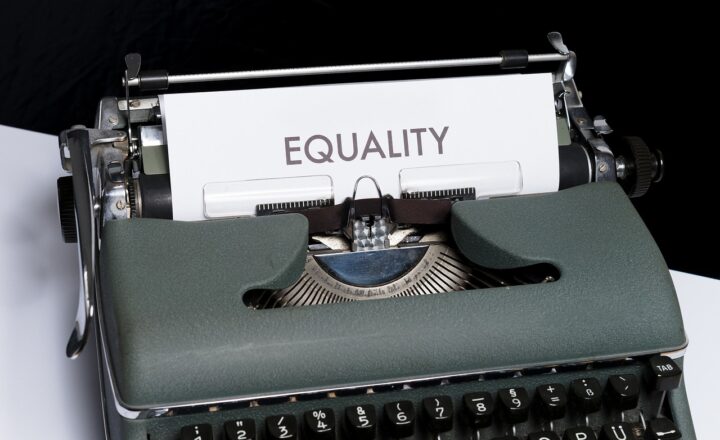How Historical Peace Agreements Shaped Modern Diplomacy Practices
November 16, 2024

Diplomacy is often seen as the art of negotiation, strategy, and international relations. The evolution of this intricate practice can be traced back through history, revealing that many of today’s diplomatic strategies and principles have their roots in historical peace agreements. These agreements, shaped by their unique contexts and challenges, laid the groundwork for the frameworks and conventions that guide modern diplomacy. In this article, we will explore some pivotal historical peace agreements and analyze how they have influenced contemporary diplomatic practices.
1. The Treaty of Westphalia (1648)
The Treaty of Westphalia effectively ended the Thirty Years’ War in Europe and is often credited with establishing the principles of state sovereignty and non-interference. Prior to this treaty, the political landscape was characterized by a multitude of feudal allegiances and religious conflicts.
The principles established within this treaty include:
- Sovereignty: Nation-states gained the authority to govern themselves without external intervention, a core tenet of modern international law.
- Diplomatic Recognition: The idea that states recognize each other’s sovereignty paved the way for formal diplomatic relations between nations.
- Religious Tolerance: The treaty promoted the concept of pluralism, recognizing multiple religious practices within states, which has influenced modern discussions on human rights and inclusion in international affairs.
This treaty set the stage for modern diplomacy, emphasizing the importance of respecting state boundaries and acknowledging the autonomy of sovereign nations.
2. The Congress of Vienna (1814-1815)
Following the Napoleonic Wars, the Congress of Vienna sought to restore and reshape Europe’s political landscape. This landmark meeting of major powers illustrated how diplomacy could prevent conflict through negotiation rather than warfare.
Key outcomes from the Congress included:
- Balance of Power: The concept of maintaining equilibrium among major powers remains a significant principle of international relations today. It serves as a guideline for preventing any one country from dominating the global landscape.
- Collective Security: The recognition that states could work cooperatively to maintain peace has been echoed in modern organizations such as the United Nations (UN).
- Diplomatic Protocols: The Congress established formal diplomatic protocols and practices, which laid the groundwork for modern diplomatic engagements and the manner in which treaties are negotiated and signed.
The principles of diplomacy fostered during this Congress significantly influenced European diplomatic practices and echoed into global diplomacy.
3. The Treaty of Versailles (1919)
After World War I, the Treaty of Versailles sought to bring lasting peace by imposing terms on the defeated Central Powers. However, the treaty’s legacy is mixed, highlighting both effective diplomatic negotiation as well as pitfalls that future diplomats would aim to avoid.
Lessons learned include:
- Negotiating Peace vs. Punishment: The treaty’s punitive measures against Germany sparked future conflicts, illustrating the importance of fostering cooperation rather than resentment in peace agreements. Modern diplomacy emphasizes rebuilding relationships rather than punitive consequences after conflicts.
- Involvement of Smaller Nations: The League of Nations was introduced as a venue for broader international cooperation, pushing today’s practices towards multilateralism where voices of smaller nations are recognized in peace talks.
- The Role of Public Opinion: The Treaty illustrated the growing importance of public sentiment in treaty negotiations—a relevance that remains significant in today’s diplomatic engagements, where public opinion can often shape policy decisions.
While the Treaty of Versailles had its failures, it emphasized the need for inclusive, fair, and considerate diplomacy, lessons that continue to resonate in modern global governance.
4. The Camp David Accords (1978)
The Camp David Accords represent a monumental achievement in Middle Eastern diplomacy, where U.S. President Jimmy Carter facilitated peace negotiations between Egypt and Israel. This agreement introduced several enduring principles to modern diplomacy:
- Direct Negotiations: Emphasizing the necessity for direct communication between conflicting parties, it underscored bilateral talks as a crucial method for resolving disputes.
- Role of Third Parties: The U.S. played a significant mediating role, shaping the importance of neutral parties in facilitating negotiations—a practice extensively used in modern diplomacy.
- Framework for Future Talks: The Accords provided a model for future peace processes in the region, demonstrating that successful negotiation involves multiple phases and collaborative frameworks for approaching complex issues.
The legacy of the Camp David Accords is profound, encouraging ongoing diplomatic efforts in a region often fraught with tensions and highlighting the critical nature of mediation in international relations.
5. The Good Friday Agreement (1998)
The Good Friday Agreement marked a significant turning point in the Northern Ireland peace process, ending decades-long conflict. Its negotiation involved multiple parties and set a prototype for inclusive diplomacy. Key elements include:
- Inclusion of Diverse Stakeholders: A hallmark of modern diplomacy is the inclusion of various parties in negotiations, ensuring that all voices are heard—a principle vividly illustrated in this agreement.
- Power Sharing: The establishment of a devolved government highlights the importance of power-sharing arrangements as a means to achieve lasting peace and cooperation, an essential aspect of modern diplomatic frameworks.
- Focus on Social Justice and Equity: Beyond mere political agreements, the Good Friday Agreement addressed socio-economic issues, embodying a holistic approach that is increasingly adopted in today’s diplomatic negotiations.
The principles from the Good Friday Agreement resonate widely, emphasizing the necessity of inclusivity and social justice in contemporary peace processes.
Conclusion
Historical peace agreements have profoundly shaped the landscape of modern diplomacy, informing practices and principles that continue to govern international relations today. From the inception of sovereignty and collective security to the recognition of the importance of inclusive negotiation, lessons learned through these historical contexts guide modern diplomats in pursuing peace and stability across the globe.
As we look to the future, the importance of these historical agreements cannot be overstated, serving as both blueprints and cautionary tales in the continuous quest for effective diplomacy in an increasingly interconnected world.
Whether through formal treaties, multilateral organizations, or international cooperation, understanding the roots of these negotiating practices is essential for anyone navigating the complex realm of modern diplomacy.







